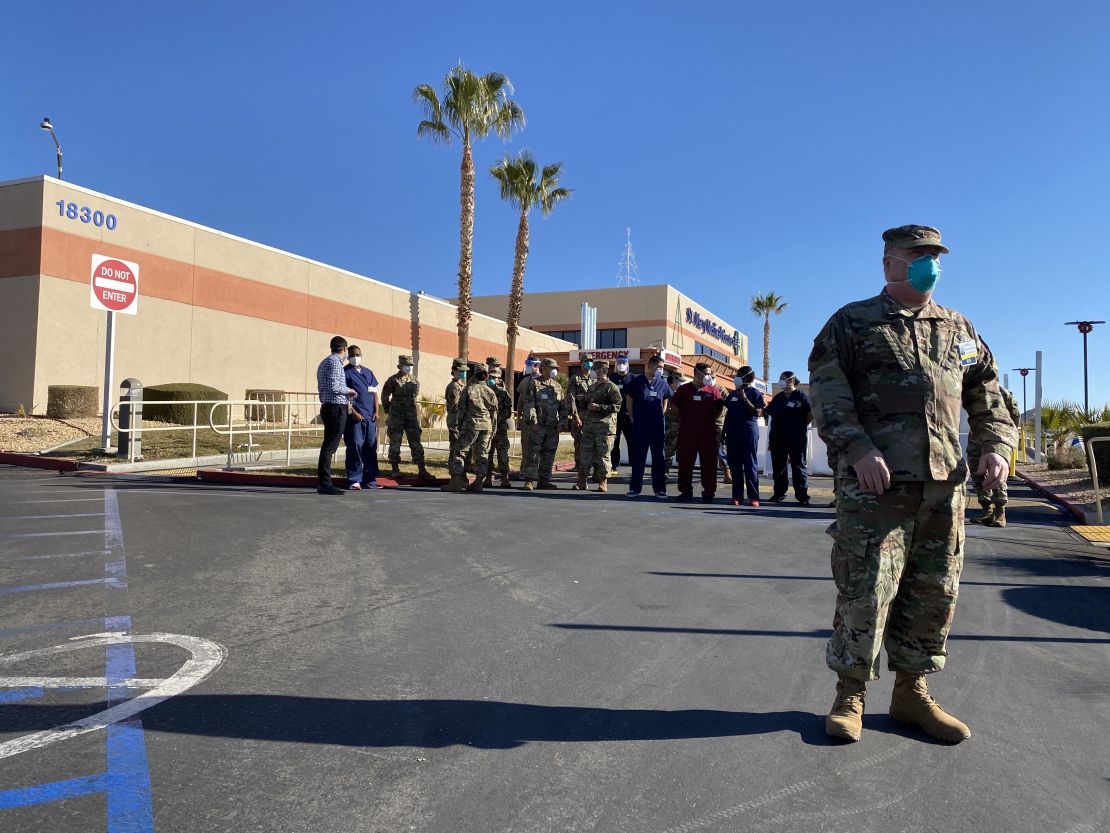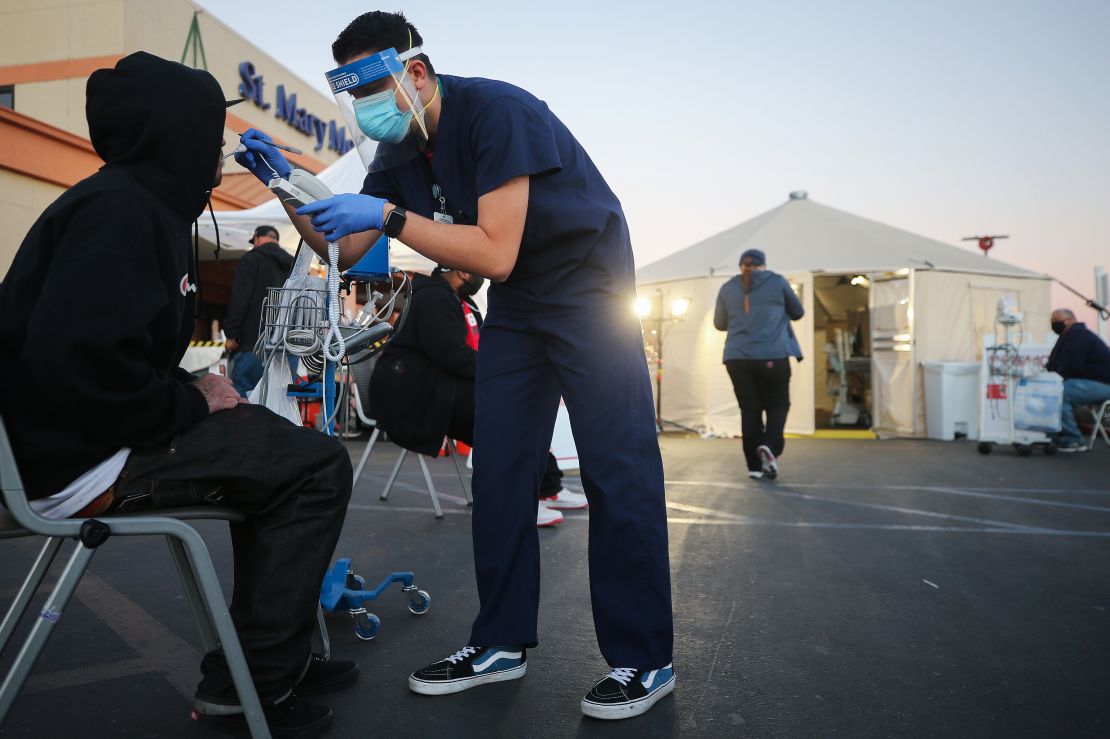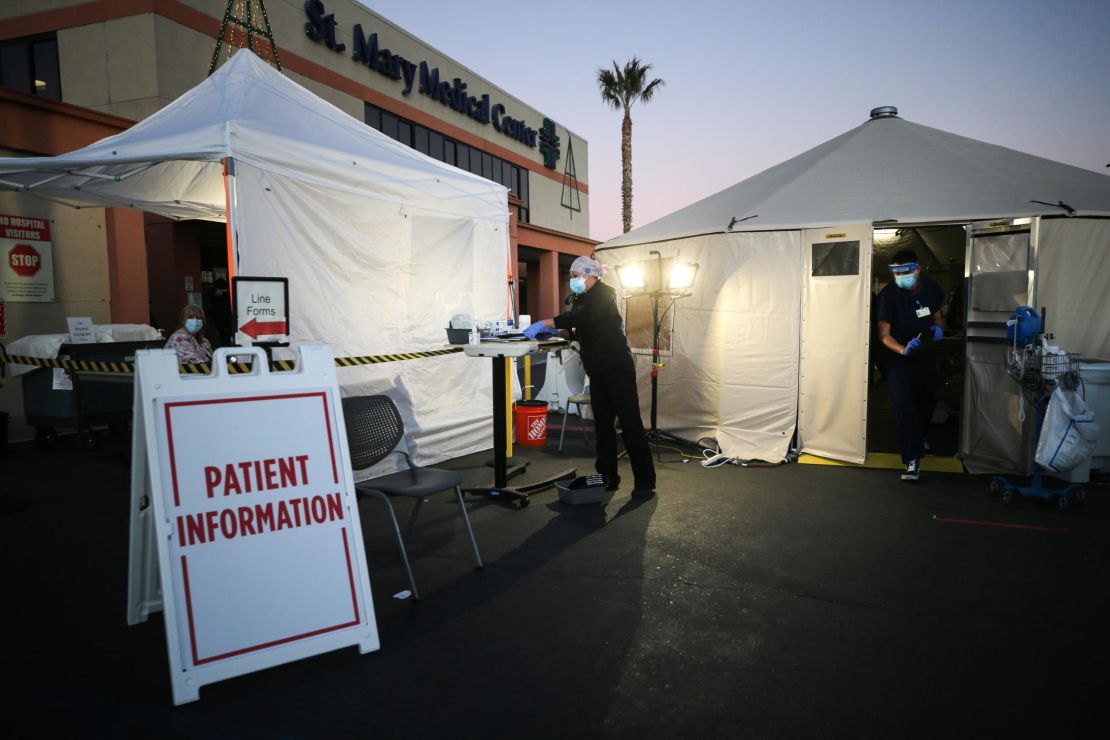Maj. Dwight Christensen remembers the sense of shock he felt first walking through the doors of St. Mary Medical Center in Apple Valley, California.
“I was seeing patients, just lining up in the hallway, in the emergency room … ICU patients just throughout the hospital,” he told CNN.

Christensen is part of a National Guard team of medics sent by California to help out hospitals struggling to deal the coronavirus pandemic.
And while his help is needed and welcomed, Christensen is blunt about how much good he’s really able to do.
“When I first got in, it felt like maybe a Band-Aid on an arterial bleed,” he said of his deployment to the hospital in a desert town 110 miles northeast of Los Angeles.
“I want to be more effective,” Christensen said. “There’s so much more that I want to do, but can I do more? I don’t know.”

The medics become extra pairs of hands in a hospital that hasn’t yet had to ration care based on equipment or medicine, but where that other vital resource – trained staff – is in critically short supply.
“We have over 50 ICU patients in the hospital right now and we only have the staff to care for about 20 of them,” said ICU manager Lindsay Packard. “The nurses are being pushed to their absolute breaking points. And then a little further every day.”
Packard praised the strength of her fellow nurses, some of whom are working 18-hour shifts, getting a short break and then coming right back to the hospital.
But she sees the toll on them, not just from the physical exertion, but the draining emotional nature of the work when they are losing so many patients in what looks like controlled chaos.

The lobby has been converted to a ward for Covid patients. Makeshift walls have been put up around the hospital to create care units in any available space.
Behind curtains, patients moan and try to take a breath. Then there is the sound of uncontrolled coughing, then a moment of silence.
The silence is shattered by the sounds of an emergency – machines beeping urgently and flashing lights; nurses rushing in; loudspeakers blaring “Code blue! Code blue!” in calls for more help to try to save a life.
Too often these days, those battles are being lost.
“In ICU we see death and dying on a daily basis, but never to this scale,” Packard said. “The death toll has just been out of this world.”
There are similar crises happening daily in hospitals across California as the winter surge of the pandemic grabs a chokehold on the state. Data from Johns Hopkins University shows a small dip in new confirmed cases, but the state is still averaging about 40,000 new cases every day.
And in San Bernardino County, where Apple Valley is located, 1 in 10 of the county’s 2.18 million residents has been infected during the pandemic, according to the California Department of Public Health.
The crisis is so widespread in the state that there is nowhere else to send patients for care. So the National Guard medics are sent in – now in 13 medical centers across the state – to back up staff and fill in the gaps should the workers themselves become ill.
Dr. Artur Grigoriyan, a critical care specialist, did become sick with coronavirus. He said he only had mild symptoms and got back to work as soon as he was no longer infectious. Still, he was out for about two weeks. Now he works almost every day.
“The physical toll, of course, is great, but there’s an emotional toll,” Grigoriyan said. “It’s really hard to see patents die. Mortality has been very, very high.”

Denise Drake says she and her fellow ER nurses do all they can to take care of the patients who come through the hospital’s doors.
“It’s very exhausting, very exhausting,” she said. “We use all the strength we have … we all work together, whether we’re on the last string, last leg, we work together and make it happen.”
And yet a year into the global pandemic, there are patients who are surprised by the ferocity of the virus, Drake said. She hopes Californians will pay more attention to health experts and follow guidelines to contain the spread.
“It’s real, it’s not going anywhere anytime soon.”


